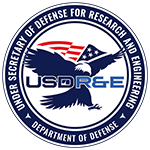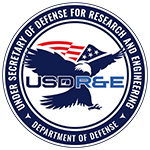Verification, Validation, and Accreditation (VV&A) Recommended Practices Guide (RPG) Use Case Overview
This page includes a listing of two kinds of Recommended Practices Guide (RPG) use case studies.
One type of study includes detailed VV&A process tailoring for a particular modeling and simulation (M&S) situation. These use cases are organized to identify factors that facilitate or hinder effective and efficient VV&A implementation.
The other type of study summarizes insights from subject matter experts regarding VV&A implementation for a particular M&S situation. These insights typically come from experience with more than one M&S and can be influenced by SME perspectives and subjectivity.
These RPG use case studies are expected to more fully support the spectrum of M&S found in the DoD community. The studies enable the implementation of VV&A processes, demonstrate the usefulness of M&S VV&A guidance, and lend credibility to the RPG as a nucleus of VV&A formalisms.
See also a description of a VV&A use case study in the Digital Engineering Body of Knowledge:
The following table identifies the six RPG Use Case Studies defined to date and includes links to six corresponding use cases:
Title |
Situation |
Source |
Rationale |
Major modification to Legacy M&S, essentially a new development. |
Campaign Model modification to add Maritime capability. |
This situation is one of the most common for Modeling and Simulation VV&A. |
|
V&V to Quantify Uncertainty and to Improve a Legacy Casualty Estimation Simulation. |
Significant uncertainty in referent, unstable configuration of M&S. |
SMEs with insights from the development and V&V efforts of a Legacy Simulation. |
This situation is one of the most common for Modeling and Simulation VV&A. |
V&V of manually sharing information among multiple legacy simulations in multiple organizations trying to compose end-to-end M&S out of multiple M&S. |
Information about processes employed to share data across multiple M&S in an existing simulation-based study. |
M&S using information from other M&S is common. In formal protocols, such as Distributed Interactive Simulation (DIS) or High Level Architecture (HLA), processes ensure things work appropriately. Less formal situations also exist, as in this RPG Use Case Study. |
|
VV&A of a Reconfigurable Live-Virtual-Constructive (LVC) Distributed Simulation Environment |
Rapid V&V of an emerging simulation environment (i.e., reconfigured to support a new System Under Test) with a persistent core which has been previously undergone V&V. |
United States Air Force (USAF) Simulation and Analysis Facility (SIMAF) Air Ground Integrated Layer Environment (AGILE) Fire exercises. |
This situation is one with major impact on DoD programs and operations. |
VV&A of M&S in Preparation for Integration into Large Scale Simulations. |
Using historical data as basis for V&V of individual M&S as basis for V&V of those M&S included within large scale simulations. |
High Energy Laser Modeling and Simulation Program. |
This situation has implications regarding the reuse potential of legacy M&S within large scale M&S. |
Issues associated with aggregation of representations and information in single and composite M&S. |
SMEs using M&S/VV&A literature and personal experience with multi-level resolution Modeling and Simulation. |
Multi-level resolution Modeling and Simulation are widely used, and the impacts realized by the aggregation of data are not clearly articulated. |
Contact Us
For more information, contact osd-sea@mail.mil using the following subject line: Attn DEM&S
Office of the Under Secretary of Defense,
Research and Engineering (OUSD(R&E))
3030 Defense Pentagon, Washington, DC 20301-3030
Contact Us
Contact Us
Information for the USD(R&E):
Contact OUSD(R&E) Staff
Social Media: @DoDCTO on Twitter
For website issues: Contact Webmaster



